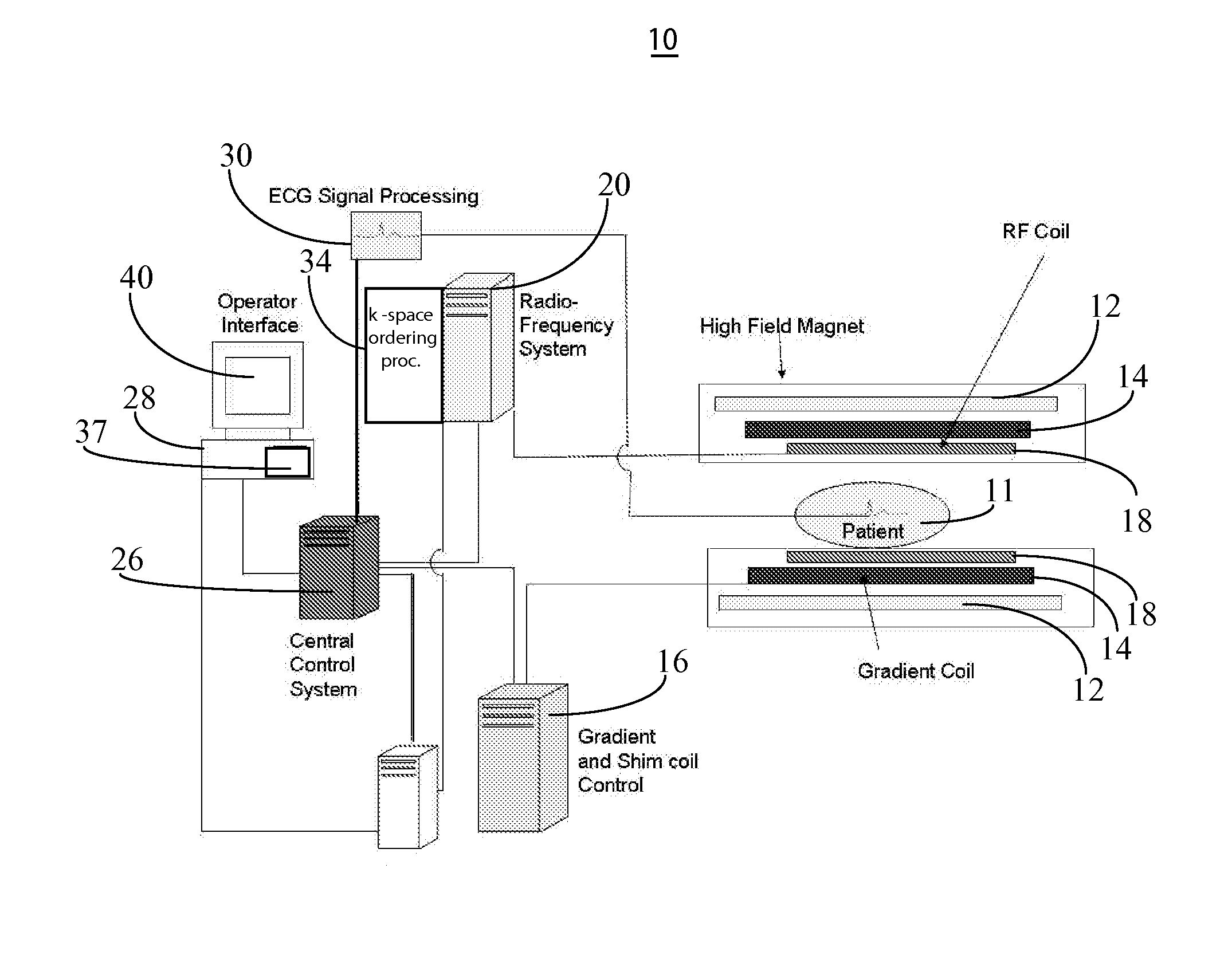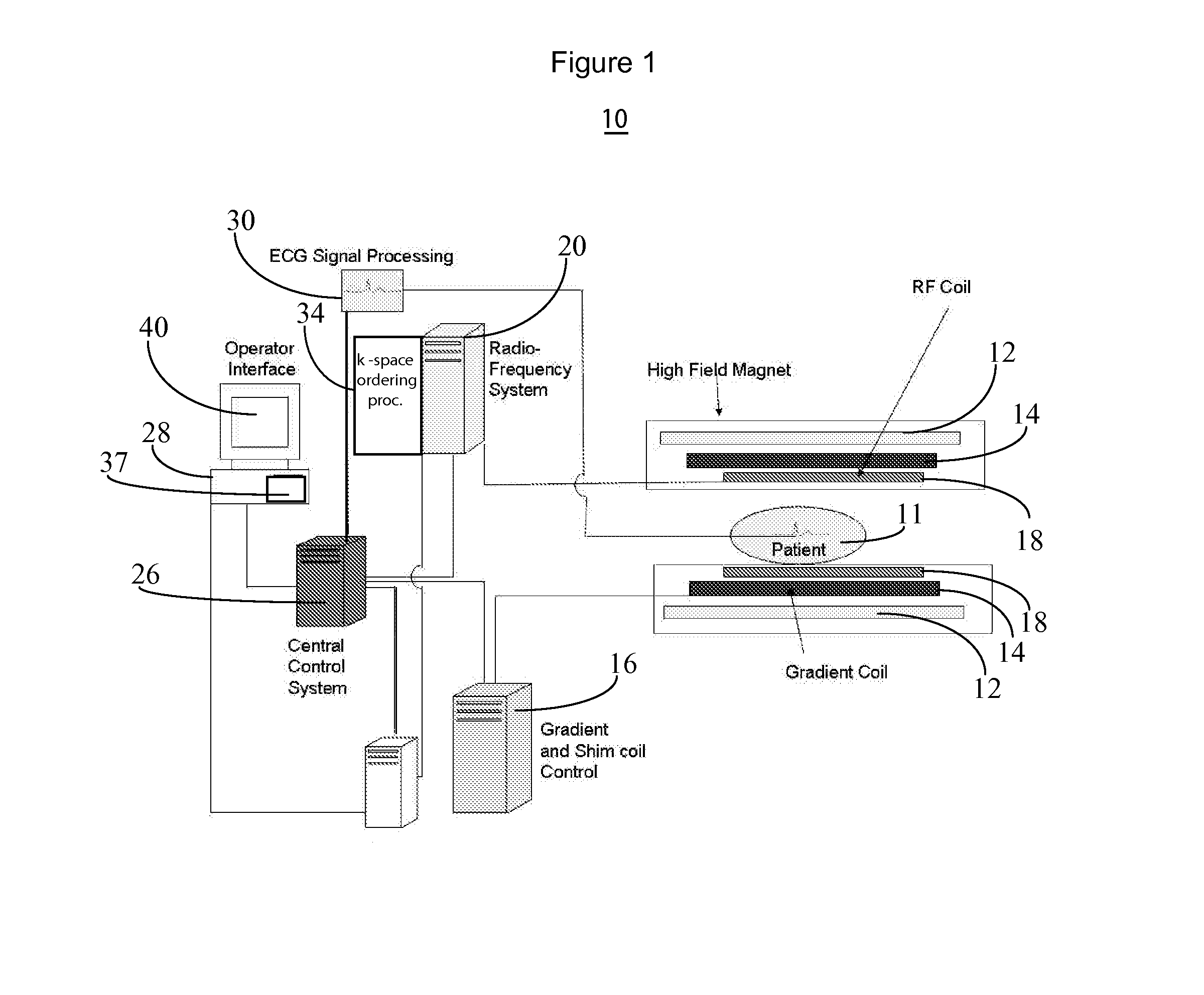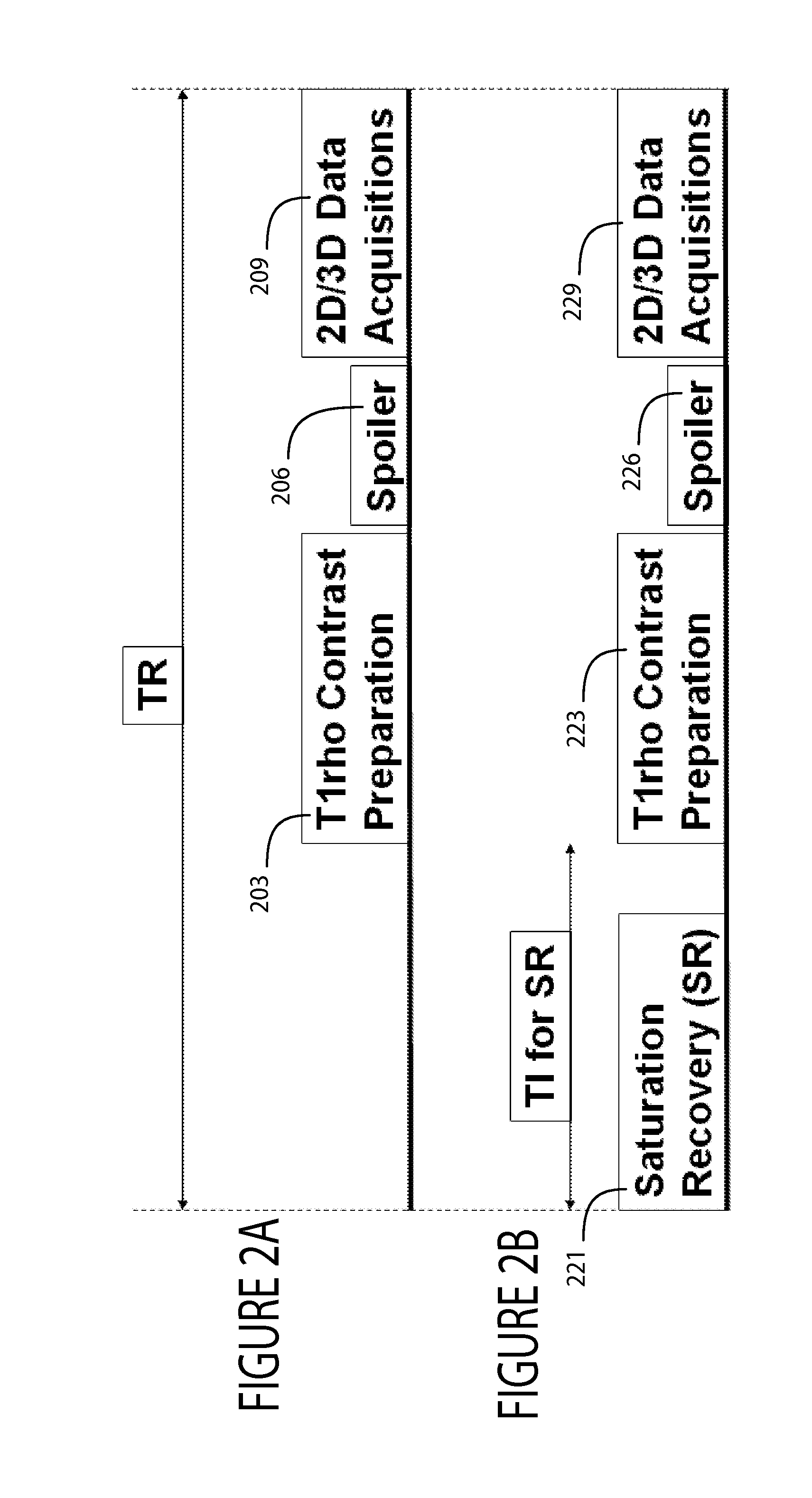System for Reducing Artifacts in Imaging in the Presence of a Spin-lock Radio-Frequency Field
- Summary
- Abstract
- Description
- Claims
- Application Information
AI Technical Summary
Benefits of technology
Problems solved by technology
Method used
Image
Examples
Embodiment Construction
[0012]A system improves spin-lock magnetic field preparation using a pulse sequence that reduces length of a radiofrequency (RF) pulse needed to generate image contrast due to T1rho as well as sensitivity to static magnet field (B0) and also dynamic transmission RF field (B1) inhomogeneity. T1 rho image contrast is due to spin lattice relaxation time constant in the rotating frame and decay of the transverse magnetization in the presence of a “spin-lock” radio-frequency field.
[0013]FIG. 1 shows system 10 for acquiring MR imaging data of a portion of patient anatomy associated with spin lattice relaxation time in a rotating frame. In system 10, magnet 12 creates a static base magnetic field in the body of patient 11 to be imaged and positioned on a table. Within the magnet system are gradient coils 14 for producing position dependent magnetic field gradients superimposed on the static magnetic field. Gradient coils 14, in response to gradient signals supplied thereto by a gradient an...
PUM
 Login to View More
Login to View More Abstract
Description
Claims
Application Information
 Login to View More
Login to View More - R&D
- Intellectual Property
- Life Sciences
- Materials
- Tech Scout
- Unparalleled Data Quality
- Higher Quality Content
- 60% Fewer Hallucinations
Browse by: Latest US Patents, China's latest patents, Technical Efficacy Thesaurus, Application Domain, Technology Topic, Popular Technical Reports.
© 2025 PatSnap. All rights reserved.Legal|Privacy policy|Modern Slavery Act Transparency Statement|Sitemap|About US| Contact US: help@patsnap.com



